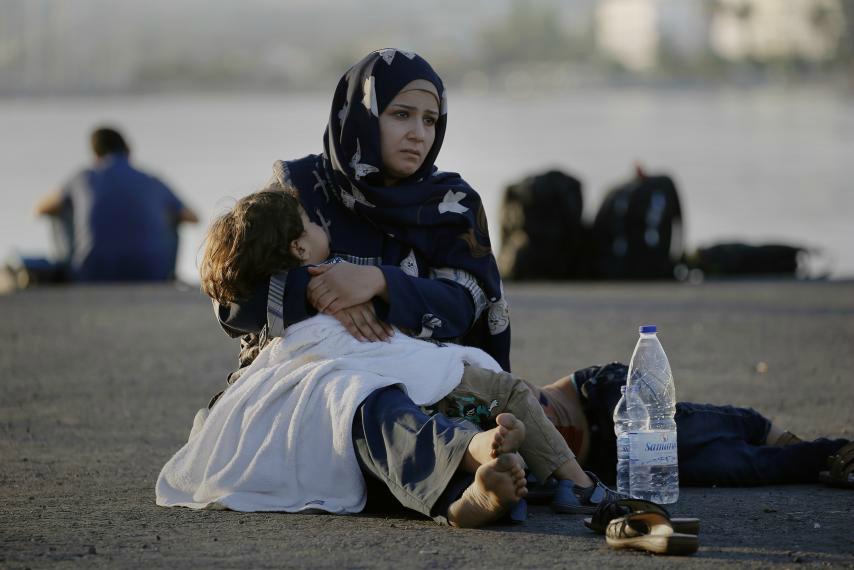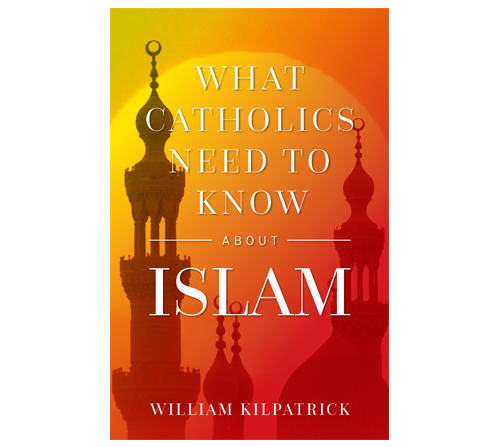In the face of increasing Muslim violence in Europe, Pope Francis has remained firm in his defense of mass migration.
In his Urbi et Orbi Christmas message, he compared migrants to the Holy Family forced to journey to Bethlehem and unable to find a room in the inn. And in his January 1st message for the World Day of Peace, Francis denounced those who decry “the risks posed to national security” by mass migration. Such people, said the pope are guilty of “demeaning the human dignity due to all as sons and daughters of God.”
As on previous occasions, Francis observed that those who fail to welcome migrants “are sowing violence, racial discrimination, and xenophobia.” On the other hand, those who welcome migrants are welcoming Christ. In an address to representatives of Caritas in September, Pope Francis told his audience that “Christ himself asks us to welcome our brother and sister migrants and refugees with arms wide open.” On other occasions he has said that in the face of the migrant we see the face of Jesus.
Ever since his election, one of the Pope’s favorite themes is that those who close the borders are, in effect, closing the door on Jesus. If you’re a Christian that argument is hard to resist. Who wants to slam the door on Jesus? Who wants to be told on the Last Day, “I was a stranger and you did not welcome me”?
The Pope’s argument is an emotional one, but it’s a powerful one, and it’s based in scripture to boot. Because of his office and because of his invocation of Jesus and the Holy Family, his appeal on behalf of migrants merits close examination—all the more so because so much is at stake.
The first thing to keep in mind is that most of Christ’s admonitions are aimed at individuals, not governments. If a boat full of migrants capsizes near shore, and you are in a position to help, you have a Christian obligation to lend a hand. Governments also have a responsibility to rescue endangered migrants at sea, but they have a corresponding obligation not to encourage such a dangerous crossing in the first place. Moreover, it should be obvious that governments have no obligation to allow an unlimited flow of migrants to come across their borders. There is no duty to do what is mathematically impossible. A government’s duty to its own citizens may even require the closing of its border under certain circumstances. “I was a stranger and you welcomed me,” is a message directed primarily to the hearts and minds of individual Christians, not to the Swedish Migration Agency.
Still, what does an individual do when voting time rolls around? Does he vote for the welcoming party or does he vote for the close-the-borders party? And if he votes for the latter does that mean he’s shutting the door on Jesus?
The trouble with drawing an analogy between Jesus and Muslim migrants is that, like all analogies, it limps. It applies to some situations, but not to others. And if it’s applied too broadly, it becomes very confusing. It’s easy enough to see the face of Jesus in the child who comes across the border in the arms of his mother, but how about the young man who enters with visions of jihad dancing in his head? Do you want to say to the man who has just been run over on London Bridge by a refugee jihadi that Jesus was driving the car? And while we’re on the subject of London, do you want to tell the delivery man who has been the victim of an acid attack that he should strive to see the face of Jesus in the face of his assailant? According to the Sun, “vast areas of East, North and South London have been declared ‘no-go zones’ by terrified delivery drivers because of the acid attack epidemic.” Members of the House of Commons were recently told that London now has more acid attacks per head than any other city in the world.
The question is, why aren’t we being encouraged to see the face of Jesus in the acid-scarred face of the delivery man? Unlike many of the migrants, he truly is a victim. We know that the majority of the migrants are young men, and most of them are not fleeing war. In fact, 80 percent of migrants who claim to be fleeing the war in Syria are not really from Syria at all. Moreover, judging by the current crime wave in Europe, a significant number of these migrants are more victimizer than victim.
It’s not a good idea to politicize the birth of Jesus, but that’s what Pope Francis seems to be doing in his Urbi et Orbi Christmas message. “Christmas,” he said, “invites us to focus on the sign of the Child and to recognize him in the faces of little children, especially those for whom, like Jesus, ‘there is no place in the inn.’” He then proceeds to “see Jesus” in the faces of suffering children in various parts of the world, but most of them seem to be Muslim children. For example, “children of the Middle East who continue to suffer because of growing tensions between Israel and Palestinians,” “Syrian children,” “children I met during my recent visit to Myanmar and Bangladesh,” and “children forced to leave their countries to travel alone in inhuman conditions.” Pope Francis then concludes, “May our hearts not be closed as they were in the homes of Bethlehem.”
The last, of course, is directed toward “selfish” and “fearful” Europeans and Americans who oppose the Pope’s open borders policy. The trouble is, Francis’s invocation of the Child Jesus is decidedly one-sided. As he says, we should try to see the face of Jesus in the face of suffering migrant children. But why can’t we also see the face of Jesus in the face of the victims of Muslim migrants—those who have been beaten, raped, stabbed, and run over? How about the many child victims of the jihad truck massacre in Nice, France two years ago? The child victims of the jihad attack on the Ariana Grande concert in Manchester, England? The 1,400 teenage victims of the Pakistani rape gangs in Rotherham, England? One could also include all those Muslim children who are victims of their own religion. For example, it’s estimated that hundreds of thousands of Muslim children living in Europe have been subjected to female genital mutilation. Why is the Christ Child analogy not extended to these other child victims?
This Christmas, Pope Francis also employed a related analogy—one he has often used in the past. He drew a comparison between today’s refugees and the Holy Family fleeing to Egypt to escape King Herod. Francis never specifies who today’s Herods are, but it’s clear that his message is aimed at those Europeans and Americans who are tempted to close their hearts to the Holy Family which comes to us today, he says, in the guise of Muslim migrants.
As with so many of the Pope’s Biblical references, this one can be used both ways. One can just as easily make the case that those who are opening the borders to Muslim migrants are, in effect, opening the gates to Herod’s army. By importing a culture that justifies rape, honor violence, and terrorism, ecclesiastical and government elites are aiding and abetting the Herods of today. And they should not be surprised if a slaughter of the innocents ensues.
There is another analogy to consider. If Herod had succeeded in finding the Christ Child, Christianity would have been nipped in the bud. Although he failed, the attempt to exterminate Christianity is a perennial one. Today that attempt comes mainly from the Muslim world, and there can be little doubt that many Muslims hope to bring their war against Christianity to Europe. From that perspective, it is not the “welcomers” who are offering shelter to the Christ Child, but rather those courageous Europeans who are resisting today’s equivalent of Herod’s troops.
There is a sense in which one is justified in seeing the face of Jesus in Muslim refugees. But there is another sense in which one can quite rightly see the face of jihad.
This article originally appeared in the January 15, 2018 edition of Crisis
Photo credit: newsweek.com


